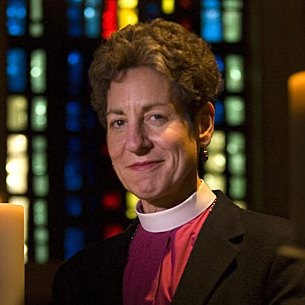You will read this as our news coverage of the Episcopal Church makes a major transition from a print-primary presence to publishing primarily through electronic media. This shift has been in the works since before the last General Convention. Some of you will find little difference as this change works itself through, continuing to receive a diocesan and churchwide newspaper delivered through the U.S. Postal Service. In other cases, a diocesan paper edition may shift to online media and/or cease paper production altogether.
In part, this shift recognizes the financial and ecological burdens of producing a monthly newspaper that is mailed to subscribers. In part, this shift recognizes what is happening all around us, as information sharing becomes far more rapid and immediate than the capabilities of print media. More and more people receive their news electronically rather than in the morning newspaper â though I must admit I haven’t yet figured out how to conveniently read an online morning paper over breakfast!
Aside from dealing with the changes involved in receiving coverage in new ways, the kind of news presented will shift to fit the medium more appropriately. Breaking news will be available online. Former printing partners (dioceses or congregations) now have the ability to tailor their publication to a far greater degree than the old system allowed. A new quarterly print publication will offer more opportunity for reflection and in-depth conversation than is possible in a daily or even monthly publication.
This has significant connections to evangelism â the ways in which we tell the good news of Jesus. Similar changes are needed in the ways in which we tell good news in our own communities, to those who know little or nothing of the gospel. We can no longer think we are doing evangelism simply by waiting for people to come to church on Sunday morning â that isn’t adequate in most of the contexts in which the Episcopal Church exists, if it ever was.
Increasing percentages of the population around us don’t know who we are or why we exist. We need to find new ways of telling the old, old story â ways that are congruent with the joys and challenges of the people and societies around us.
This kind of recontextualizing of the gospel is (and has been) necessary in every age, since the first apostles. The Samaritan woman went home from her water break with Jesus to tell her friends and neighbors about the person she had just encountered (John 4). She didn’t hang around the well waiting for them to show up. She didn’t write a tract and post it next to the bucket. She didn’t even produce a drama to tell the story. She went and found her friends and told her own story.
There is an urgent need for Episcopalians to learn and try new ways of evangelism. Most of them begin by telling our own stories or providing opportunities for others to tell theirs. One of my favorite images of the latter comes from Nelle Morton, which she calls “hearing others into speech” (The Journey is Home, Beacon, 1985). An intrinsic part of our task is to provide opportunities where others can feel safe enough to begin to share their questions and fears and stories about God. Increasingly that’s being done by going out into the community, rather than waiting for people to come to church.
I met a number of “relational evangelists” when I was at the Massachusetts Institute of Technology recently. These young people are serving one-year internships that are primarily focused on this kind of mission. They live in intentional community, engage in spiritual and vocational discernment and spend time with people in the larger community around them, building relationships for transformation through a program sponsored by the Diocese of Massachusetts.
Does your congregation or your diocese have an evangelism commission? If you want to start one and don’t quite know how, the Diocese of Bethlehem (northeastern Pennsylvania) has a well-functioning team you might learn from http://www.diobeth.org/
A collection of useful resources, on working with those in their 20s to advertising, can be found here.
As you watch this news coverage of the Episcopal Church make its transition, I invite and encourage you to think about (and then act on) ways in which your own congregation or diocese can reach out to the people around you to share the good news you know in Jesus.
